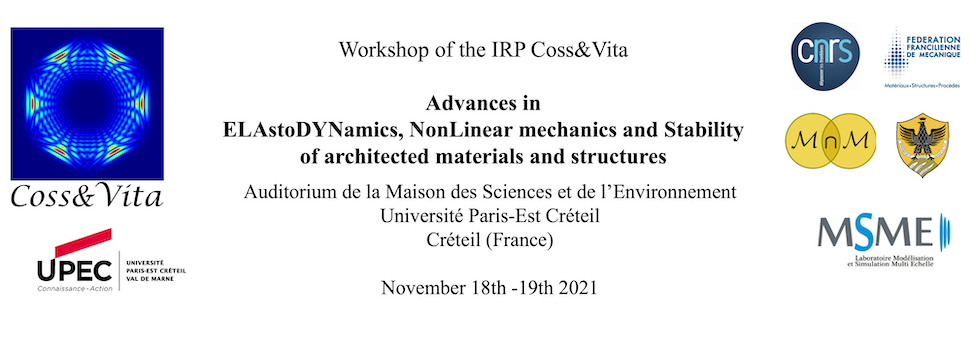Architected metamaterials yielding superior dynamic performances can be conceived by realizing local mechanisms of inertia amplification in the periodic microstructure [1]. A periodic cellular waveguide characterized by an intracellular pantograph mechanism is considered as minimal physical system simulating an inertially amplified metamaterial [2]. A discrete tetra-atomic model is formulated to describe the undamped free dynamics of the cell microstructure. The ordinary differential equations of motion feature quadratic and cubic inertial nonlinearities, induced by the axial indeformability of the pantograph arms connecting the principal massive atoms with the secondary massive atoms, serving as inertial amplifiers. The transfer matrix of the linearized model is considered to describe the free propagation of small-amplitude harmonic waves. First, the band structure of the complex-valued dispersion spectrum is determined analytically, by properly exploiting the formal (time-to-space) analogy with the Floquet Theory for the stability of non-autonomous dynamic systems (direct problem). Second, a spectral design problem is stated and solved by inverting analytically the functions expressing parametrically the boundaries separating attenuation (stop) and propagation (pass) bands in the frequency spectrum (inverse problem). The inverse problem solution provides the mechanical parameters of the inertially amplified metamaterial possessing a desired band structure, assigned according to functional design requirements [3]. The existence and uniqueness of the solution in the admissible range of mechanical parameters is discussed. The discussion provides (i) mathematical demonstration for the existence of feasible design solutions or multi-solutions, (ii) complete definition of the physically realizable band structures in the frequency domain, and (iii) alternative criteria to design iso-band structured metamaterials within the admissible domain of mechanical parameters. Different metamaterials purposely designed to satisfy functional or even extreme spectral requirements are finally presented.
References
[1] Taniker, S., Yilmaz, C. (2015). Design, analysis and experimental investigation of three-dimensional structures with inertial amplification induced vibration stop bands. International Journal of Solids and Structures, 72, 88-97.
[2] Settimi, V., Lepidi, M., Bacigalupo, A. (2021). Nonlinear dispersion properties of one-dimensional mechanical metamaterials with inertia amplification. International Journal of Mechanical Sciences, 201, 106461.
[3] Settimi, V., Lepidi, M., Bacigalupo, A. (2021). Analytical spectral design of mechanical metamaterials with inertia amplification. submitted
- Poster

 PDF version
PDF version
